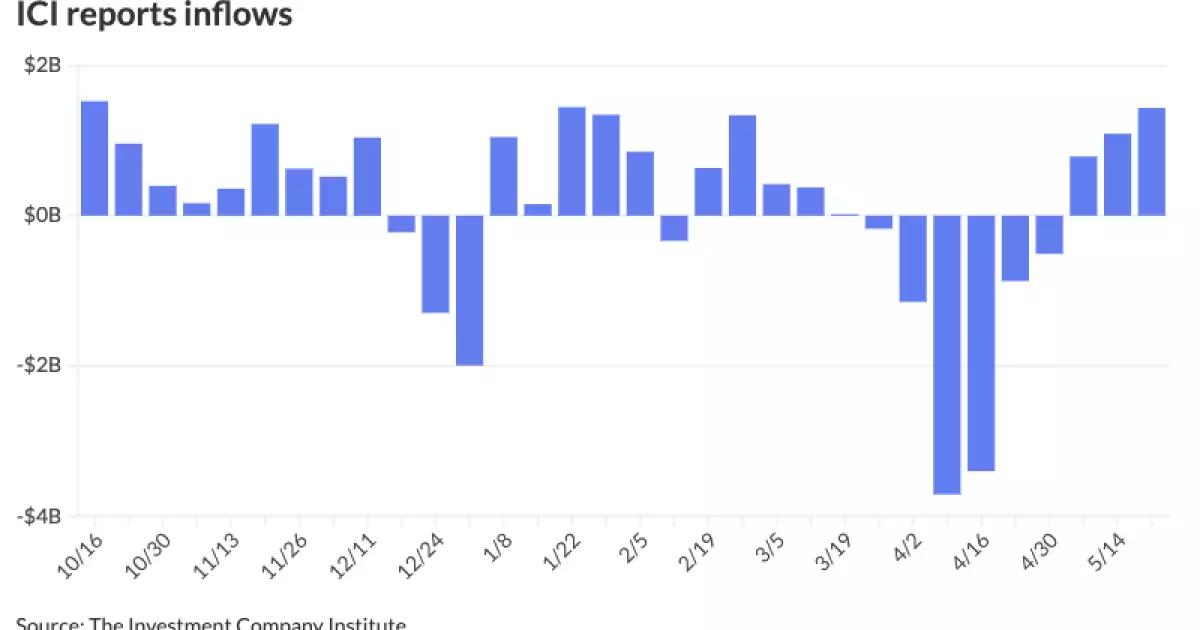Investors in the municipal bond market often find themselves navigating a complex web of economic indicators, interest rates, and policy decisions. Recently, reports have pointed towards a steady performance in municipals, with specific ratios indicating a strengthening investment climate. However, beneath this veneer of stability lies a market riddled with risks and uncertainties that could impact investors significantly.
As the municipal-UST ratio for various maturities hovered around 70-91%, many see these figures as optimistic. Yet, the reality is that these numbers might mask underlying vulnerabilities, especially amidst fluctuating U.S. Treasury yields. Investors must grasp that while the ratios trend favorably, they’re always at the mercy of broader economic conditions, and these conditions rarely remain static.
The issuance of municipal bonds has reportedly been robust, with supply exceeding $10 billion weekly. Traditional wisdom suggests this might lead to an excess supply problem that could push prices down, putting pressure on yields. This dynamic, combined with rising Treasury yields, raises a critical question: Are investors truly prepared for the volatility that may ignite from this combination?
The Ripple Effects of Policy Announcements
Market sentiment can swing dramatically in response to political and economic announcements, which was starkly illustrated when President Trump unveiled his “Liberation Day” tariffs. The immediate reaction was a wave of selling pressure as investors pulled back, contributing to serious liquidity crunches in the muni space. Jeremy Holtz, a seasoned portfolio manager, emphasized this period of heightened risk aversion, underscoring how sensitive this market is to political rhetoric and policy uncertainties.
This correlation between political climates and market movements should serve as a clarion call for investors. Rather than merely reacting to numbers, they must remain attuned to the larger geopolitical landscape. The tariffs stand as a painful reminder that equity markets and municipal bonds do not operate in isolation and that policy risks can unleash substantial volatility on an unsuspecting market.
Investor Behavior: The High-Stakes Game
The recent wave of inflows into municipal securities—totaling $1.435 billion—signals a renewed interest, especially in riskier segments. Yet, it also reflects a herd mentality that often pervades the market. Investors have a tendency to leap into what seems “hot,” without adequately considering underlying fundamentals or potential pitfalls. This behavior is perpetuated by persistent low yield environments, where riskier boos, such as long New York City or California general obligations yielding 4.60%, become alluring to yield-seeking investors.
The significant dependence on retail buyers through SMAs and ETFs emphasizes a crucial point: retail investors lack the sophistication often needed in a fluctuating environment. Their entry into high-yield bonds could precipitate liquidity issues for institutional investors that might struggle if retail sentiment shifts suddenly. This underbelly of municipal market dynamics showcases the precarious balance between perceived opportunity and genuine risk.
Reinvestment Trends: A Double-Edged Sword
For seasoned investors, the prospect of over $100 billion in reinvestment over the coming months is both promising and concerning. While ample reinvestment can buoy demand, leading to upward price pressure, the sheer volume could also flood the market, complicating supply constraints.
Matt Fabian’s assertion that scaled-up institutional demand has not yet materialized indicates a pressing need for cautious optimism. A lack of institutional participation in this market could amplify volatility as retail investors face the brunt of the market’s whims. It’s essential to analyze trends critically rather than viewing them through rose-colored glasses; the market is accommodating only if its fundamentals support it, an assertion that should not be disregarded.
Geopolitical Tensions and Economic Stressors
The municipal bond market also bears a heightened vulnerability to external shocks—from fiscal responsibility questions in blue cities and states facing federal aid cutbacks to the unsettling prospect of an economic downturn sparked by tariffs or federal employee layoffs. These looming factors, often relegated to the background in investor analysis, are critical in evaluating the true health of the municipal market.
As hurricane season approaches, the additional strain placed on FEMA and state budgets reveals an intricate connection between environmental factors and fiscal health. This reality forces investors to question whether even entrenched municipal bond issuers can weather severe disruptions. It’s not merely about the yields offered, but the sustainability of the entities backing these bonds.
The current environment showcases an intricate interplay between municipal bonds and a range of external economic factors, emphasizing the need for an analytical lens rather than mere reliance on numerical indicators. Investors in the municipal bond space must remain ever vigilant and critically engaged, as complacency could lead to significant setbacks in the face of unforeseen developments.


Leave a Reply